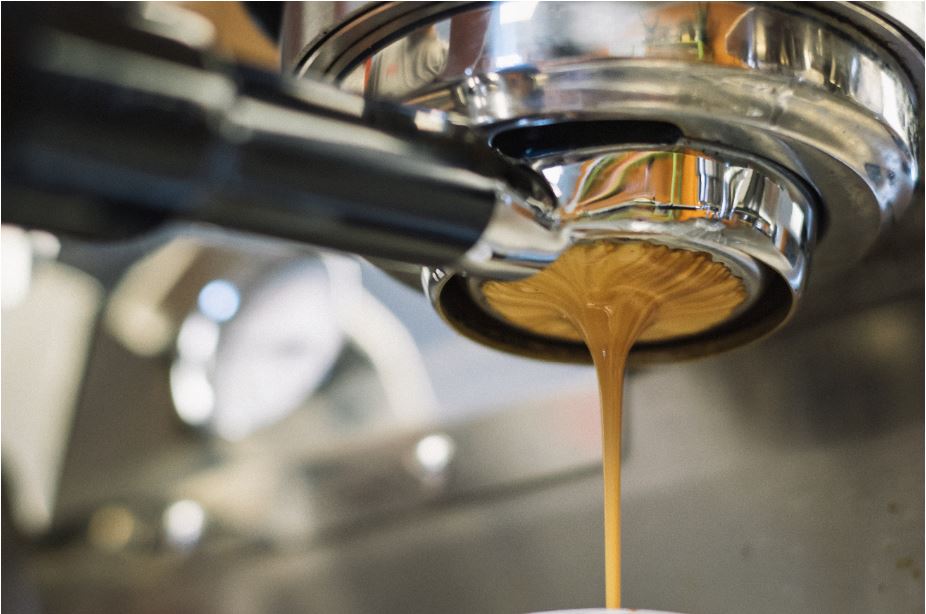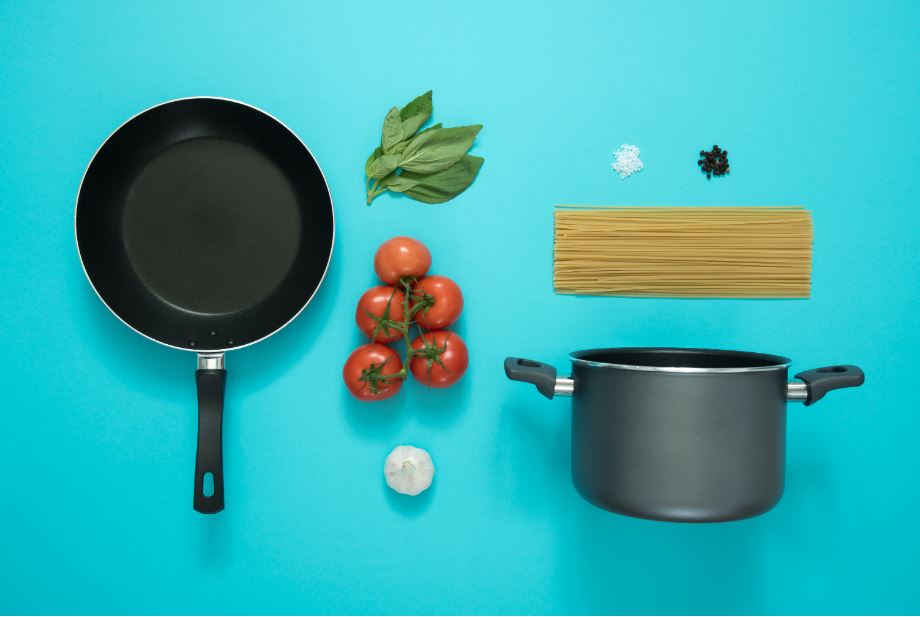
How to Clean Cuisinart Keurig Coffee Maker
- Khadija Sheikh
- 0 Comment
- Coffee Makers, Kitchen Appliances
- 8 minutes read
Coffee is the world’s most famous beverage. It got a little bit better when the pod coffee maker came onto the scene. A coffee maker is the favorite small appliance in a kitchen for any coffee lover.
The reservoir is very good at storing mold because people leave water inside of it. Your breeding lines have a tendency to clog over time with mineral buildup. From time to time, though, you need to give it a good cleaning like anything else. The cleaning process may differ depending on what you have at the time.
You can clean your coffee machine with soapy water, vinegar, or using distilled water. Some users prefer baking soda, while many others tend to use vinegar to clean the Keurig coffee maker.
Follow these steps to clean your Keurig coffee maker safely and smoothly.
Table of Contents
Ingredients You Need
- Hot Water
- Vinegar
- Dry Cloth
First, we will see how to clean the outside of the Keurig. Later, we’ll clean out those lines. Just a quick word of warning.
1. Unplug the Coffee Maker
Before we get started, make sure you remove the plug before cleaning. It’s an easy step but mandatory.
2. Disclose removable parts
Fill the sink with hot, soapy water. Now remove all the removable parts from the Keurig, such as the K cup holder, mug stand, lid, and reservoir.
3. Hot Soapy Water
While those are soaking, you could dip a microfiber cloth in your hot, soapy water and use it to wipe down the machine.
Don’t forget to clean the area around the pod holder as tea/coffee granules collect mostly here. (Use a dry cloth to clean the surface while you may use damp where needed)
4. Use Toothbrush
You can use a cleaning toothbrush to access any hard-to-reach areas of the machine.
5. Cleaning up outside
Pour off the reservoir lid and let it soak next to the actual reservoir. Then wash the drip tray, most of which are two pieces, and lastly, the Kay cup holder.
Cleaning Coffee Maker with Vinegar – Short Quick Way
- To clean up a coffee maker using vinegar is something of the next level.
- Fill that reservoir halfway with white vinegar. Then, turn on the machine and run the brewing cycle.
- This will clean out the machine and remove any mineral build-up that could potentially be clogging those lines.
- Now, if your Keurig is really bad, you may need way more than half a reservoir of vinegar. You can run four reservoirs full of vinegar.
- But just keep brewing that vinegar until your machine comes clean.
- The next thing you have to do is clean the vinegar out. Run four reservoirs full of water through it and brew water over and over. This will clean out any remaining vinegar in those lines.
Cleaning Step-By-Step Detailed Method
To clean your Cuisinart Keurig coffee maker, start by gathering supplies like white vinegar and a microfiber cloth. Unplug the machine, remove the water reservoir and K-Cup pods, then clean the exterior. Rinse the water reservoir and brew basket with soapy water. Run a brewing cycle using a mixture of equal parts vinegar and water. Rinse thoroughly with fresh water to remove any residue. For ongoing coffee quality, keep checking for maintenance tips to enhance your brewing experience.
Gather Your Cleaning Supplies
Before starting the cleaning process, you’ll need to gather your cleaning supplies to ensure a smooth completion.
Start with white vinegar, which is great for descaling. You’ll also need water, a microfiber cloth, and a soft brush for those hard-to-reach spots.
Don’t forget a bowl to catch any drips during the process. If you have a descaling solution specific for coffee makers, grab that too.
Having these items ready will make your cleaning experience efficient and hassle-free.
Once you have everything on hand, you’ll be ready to restore your Cuisinart Keurig to its ideal performance.
Prepare the Coffee Maker for Cleaning
With your cleaning supplies gathered, it’s time to prepare your Cuisinart Keurig for the cleaning process.
First, unplug the coffee maker to guarantee safety. Remove the water reservoir and any K-Cup pods from the brew basket.
Check for leftover coffee grounds or spills and wipe them away. Then, take a moment to inspect the exterior for any accumulated dust or stains. You might want to use a soft cloth to give it a quick wipe.
Once everything’s cleared, you’re ready to plunge into the detailed cleaning of the water reservoir and brew basket to keep your machine in top shape.
Clean the Water Reservoir and Brew Basket
Cleaning the water reservoir and brew basket is essential for maintaining the performance of your Cuisinart Keurig.
Begin by unplugging the machine and removing the water reservoir. Rinse it under warm water, using a soft sponge to eliminate any residue. For deeper cleaning, you can use a mixture of vinegar and water, then rinse thoroughly.
Next, take out the brew basket and wash it with warm, soapy water. Be sure to scrub any coffee grounds or stains. Rinse it well before reassembling.
Regularly cleaning these parts guarantees a fresher taste and prolongs the life of your coffee maker.
Run a Cleaning Cycle
Running a cleaning cycle is essential to keep your Cuisinart Keurig running smoothly.
Start by filling the water reservoir with a mixture of equal parts water and white vinegar.
Place a clean mug under the brew head, then select the largest cup size and initiate a brew cycle without inserting a pod.
Repeat this process until the reservoir is empty.
Afterward, fill the reservoir with clean water and run a few more cycles to rinse out any vinegar residue.
This cleaning cycle helps remove mineral buildup and keeps your coffee tasting fresh, ensuring a better brewing experience.
Regular Maintenance Tips for Your Cuisinart Keurig
Regular maintenance is essential for keeping your Cuisinart Keurig in top condition.
Start by regularly emptying and cleaning the water reservoir to prevent mineral buildup. Check the needle for clogs and clean it with a paperclip if necessary.
De-scale your machine every three to six months using a suitable descaling solution to maintain peak performance. Change the water filter every two months for fresh-tasting coffee.
Finally, wipe down the exterior and keep the base clean to avoid spills.
Precautions and Tips
- Always empty the reservoir when you’re finished using the cured egg. Especially if you go on a vacation or you’re leaving for a weekend.
- Use distilled water instead of regular tap water.
- Distilled water has the lowest mineral content so if you’re using that you’re not gonna have to worry about the mineral build-up issue.
Coffee Machine Troubleshooting
A coffee machine of any company or brand develops problems. This common issue needs a specialized troubleshooting guide to fix the issues.
An espresso maker usually comes up with issues like beeping and power and dripping.
That is why companies offer their toll-free number for assistance. While this not all you need to terminate a minor issue.
Here, we suggest some tips and tricks to tackle routine fouls.
- Turn it off if you see the coffee machine is hanged or not brewing.
- You need to press the button and hold it for a few seconds to reset.
- Recheck if your coffee machine is set to the correct heat position.
- Check the pressure gauge if the coffee gets cold early.
- Ensure the grinder works properly (change the blades if not working)
- Make sure the milk frother is clean if you get steam too much
- Pour in different milk if the problem continues.
- Make sure the filter handle has a correct filter basket.
- Ensure machine settings perfect if the coffee grounds too wet.
- Ensure the grinder setting is correct if you turn out an awful taste coffee.
- Make sure the water is clear if you face any leakage.
- Ensure the water pipe is not blocked if leakage continues.
Can I Use Vinegar Instead of a Descaling Solution?
Yes, you can use vinegar instead of a descaling solution.
You can mix equal parts water and vinegar, run it through your machine, and rinse it out with clean water to remove the vinegar flavor.
How Often Should I Clean My Cuisinart Keurig?
You should clean your Cuisinart Keurig every three to six months, depending on usage.
Regular cleaning helps maintain peak performance and guarantees you enjoy the best-tasting coffee without any buildup affecting your brew.
Is It Safe to Run Bleach Through the Coffee Maker?
It’s not safe to run bleach through your coffee maker.
Bleach can damage internal components and leave harmful residues.
Stick to vinegar or specialized descaling solutions for effective cleaning without risking your machine’s longevity.
What Do I Do if My Coffee Maker Smells Bad?
If your coffee maker smells bad, you should brew a mixture of equal parts water and vinegar.
Run a few cycles, then rinse with fresh water to eliminate odors and restore your coffee maker’s freshness.
Can I Clean My Coffee Maker in the Dishwasher?
You shouldn’t clean your coffee maker in the dishwasher.
The heat and water pressure can damage its components.
Instead, use a gentle cleaning solution and a soft cloth to keep it in great shape.
Conclusion
By following these steps, you’ll keep your Cuisinart Keurig coffee maker in top shape, ensuring every cup tastes great. Regular cleaning not only enhances flavor but also extends the life of your machine. Remember to clean the water reservoir and brew basket often, and don’t skip those cleaning cycles. With a little effort, you can enjoy delicious coffee every time you brew. Happy brewing, and enjoy your freshly cleaned coffee maker!
Khadija Sheikh
Meet Khadija Sheikh, an avid kitchen specialist with a passion for exploring innovative kitchen gadgets, cooking tools, and remodeling tips. Her culinary journey is an artistry of flavors, where she uniquely combines her love for kitchen intricacies with a special focus on crafting meticulous step-by-step recipes. As a dedicated writer, Khadija not only unveils the secrets behind delightful dishes but also transforms kitchens into creative spaces. Join her a flavorful adventure, where every recipe becomes a narrative, and every kitchen tool tells a story.

